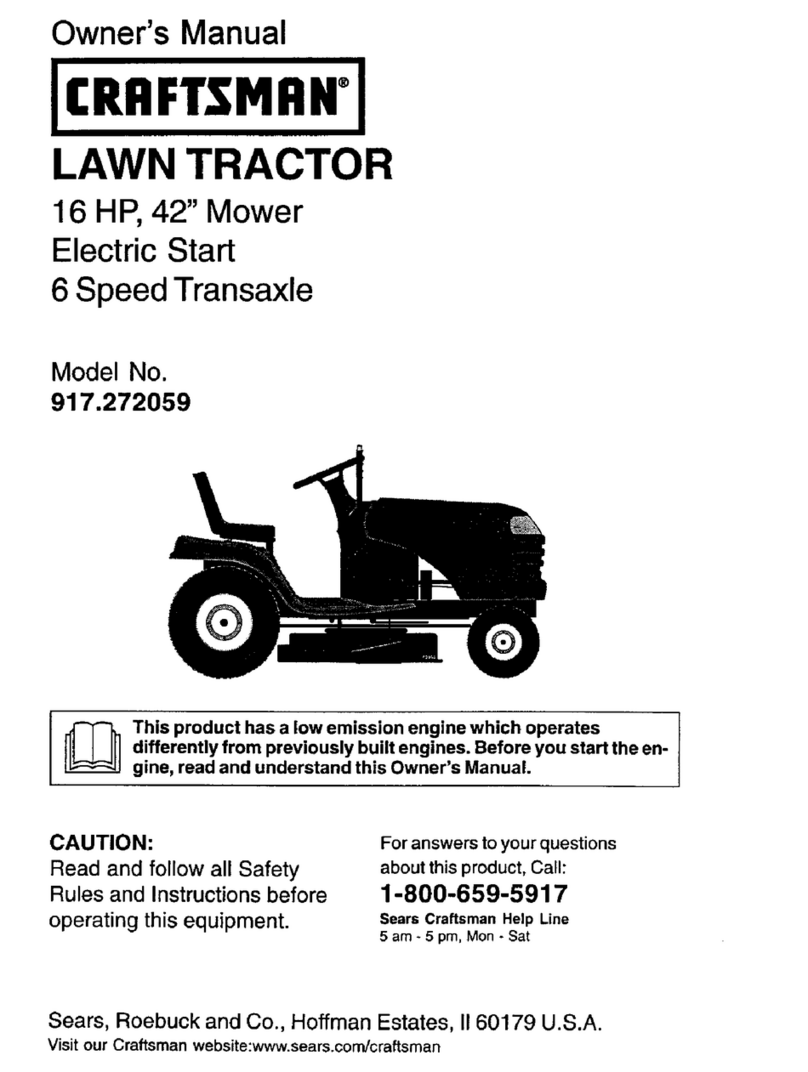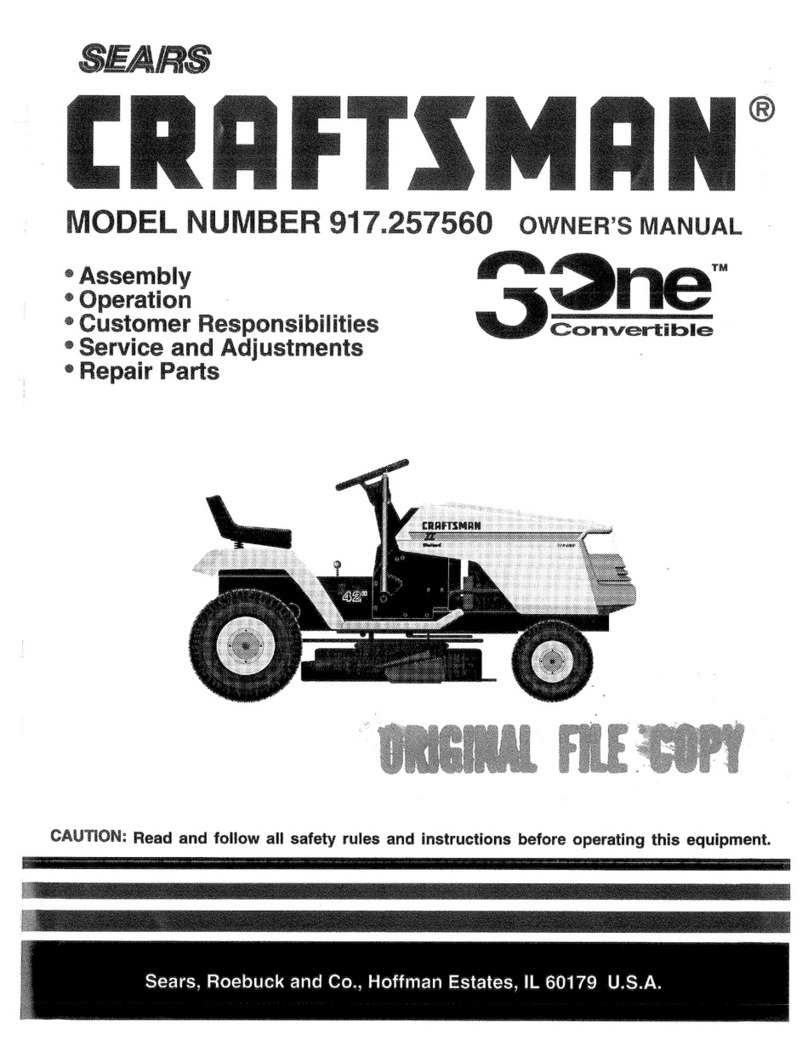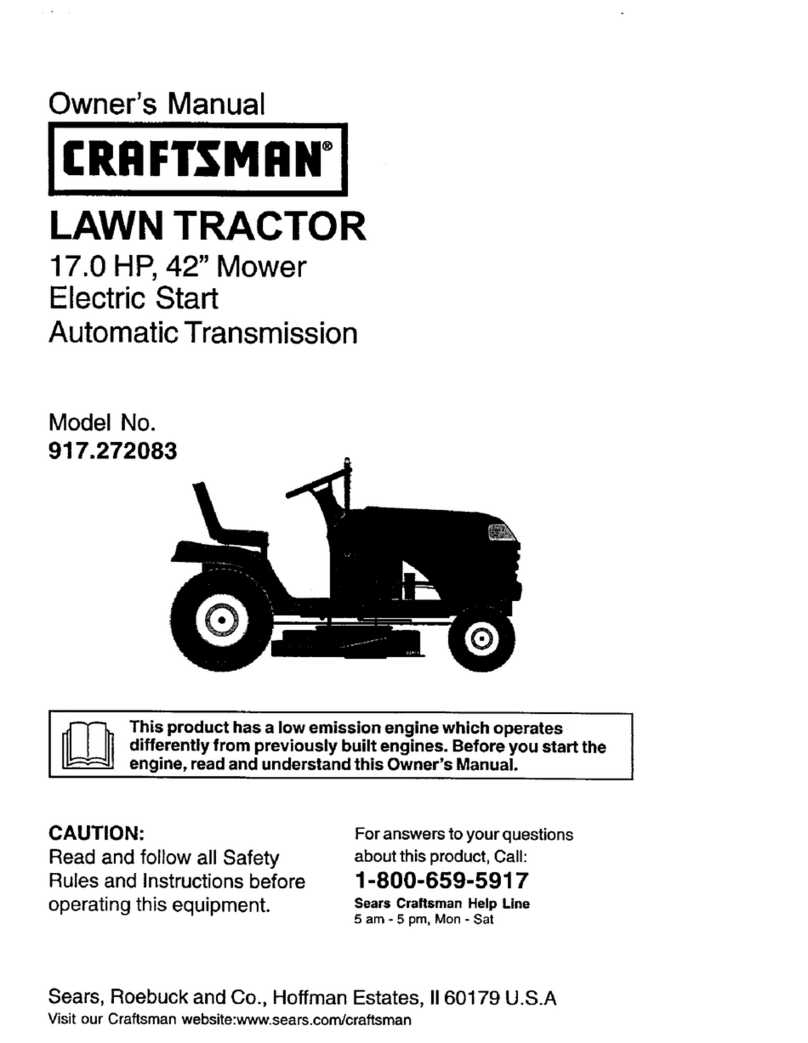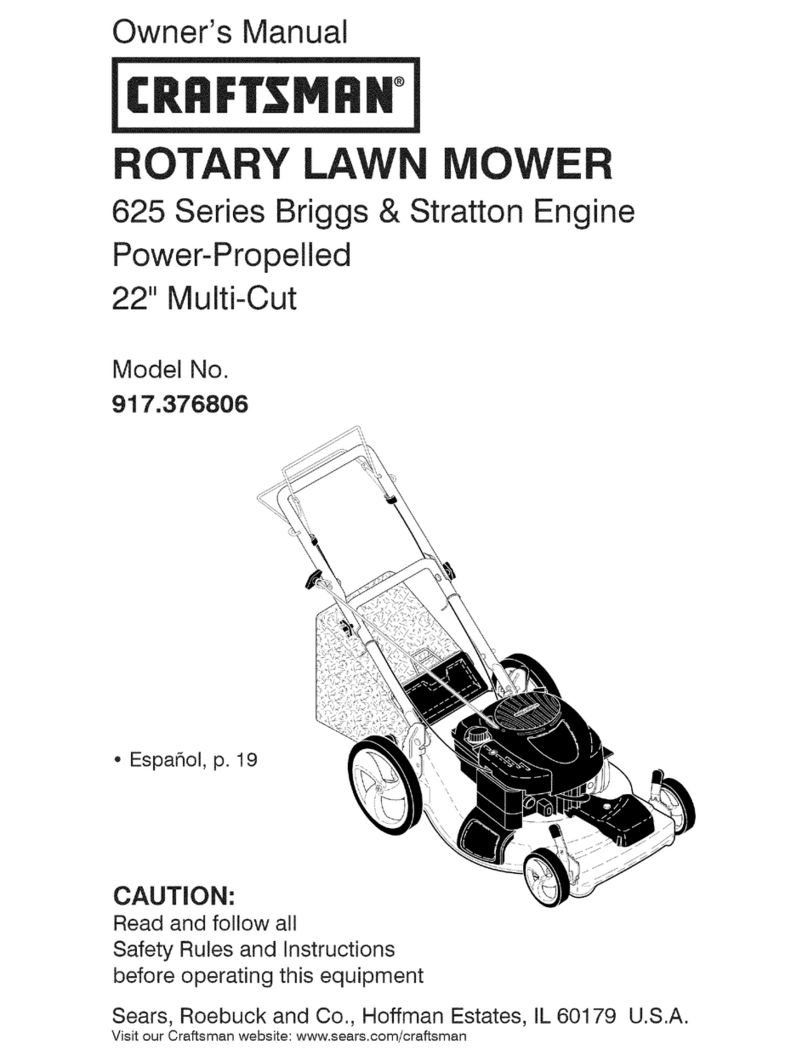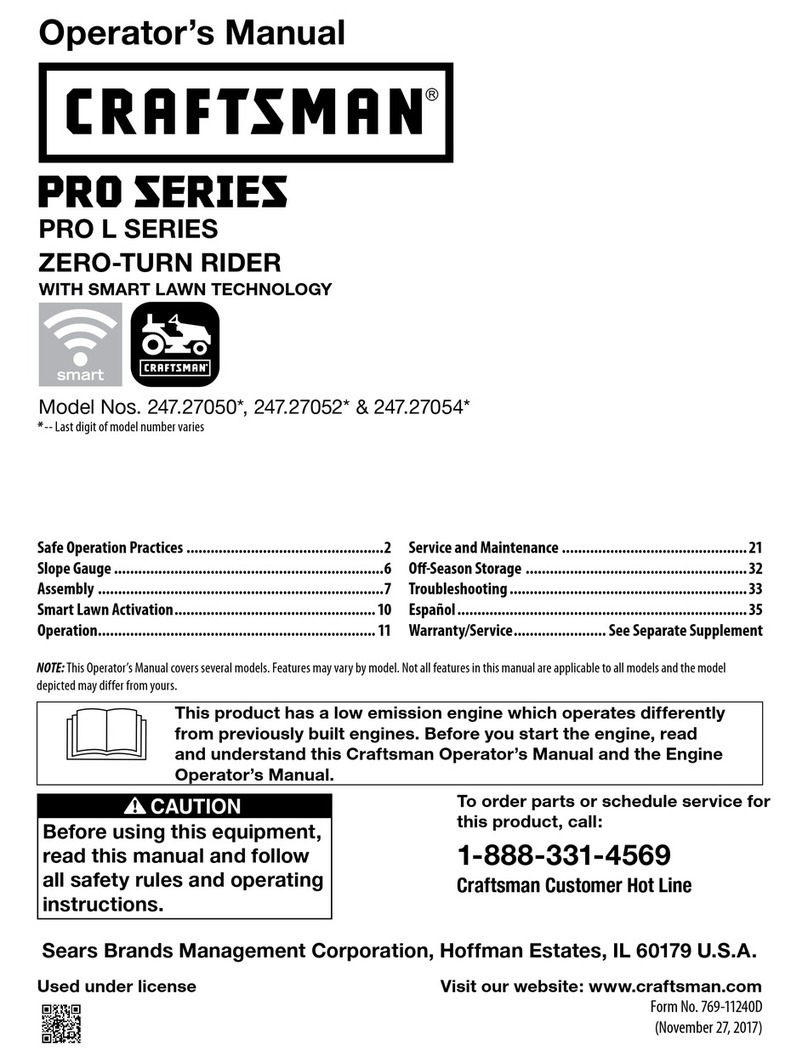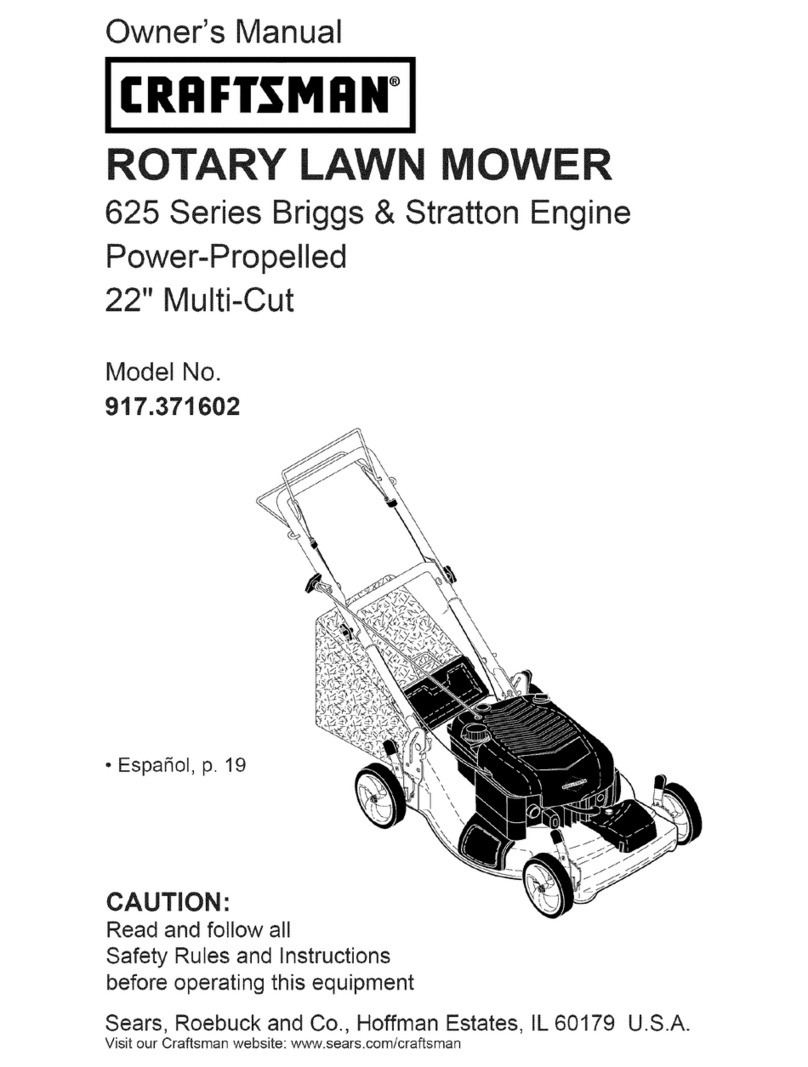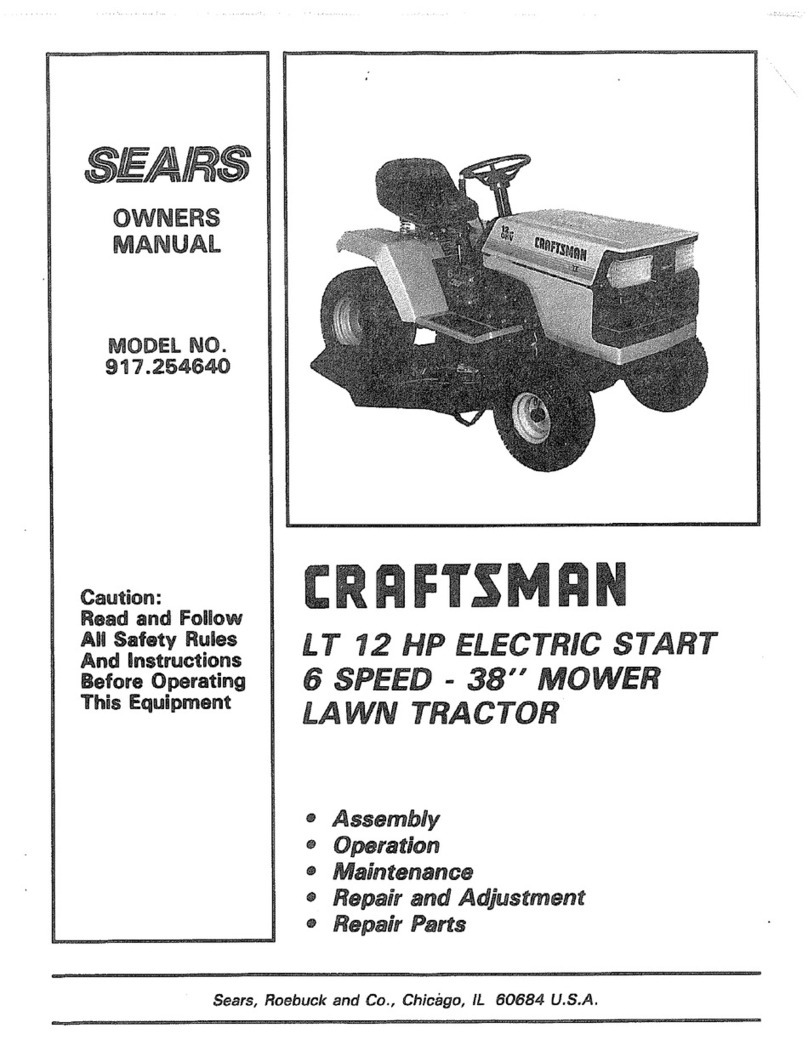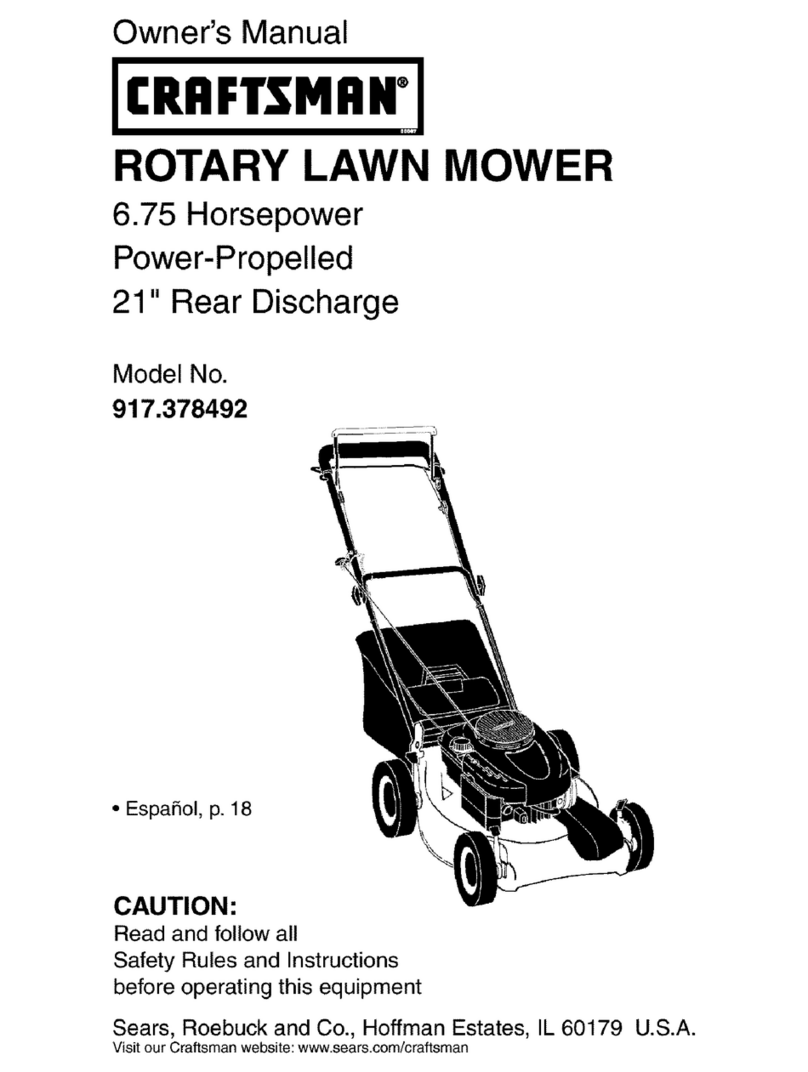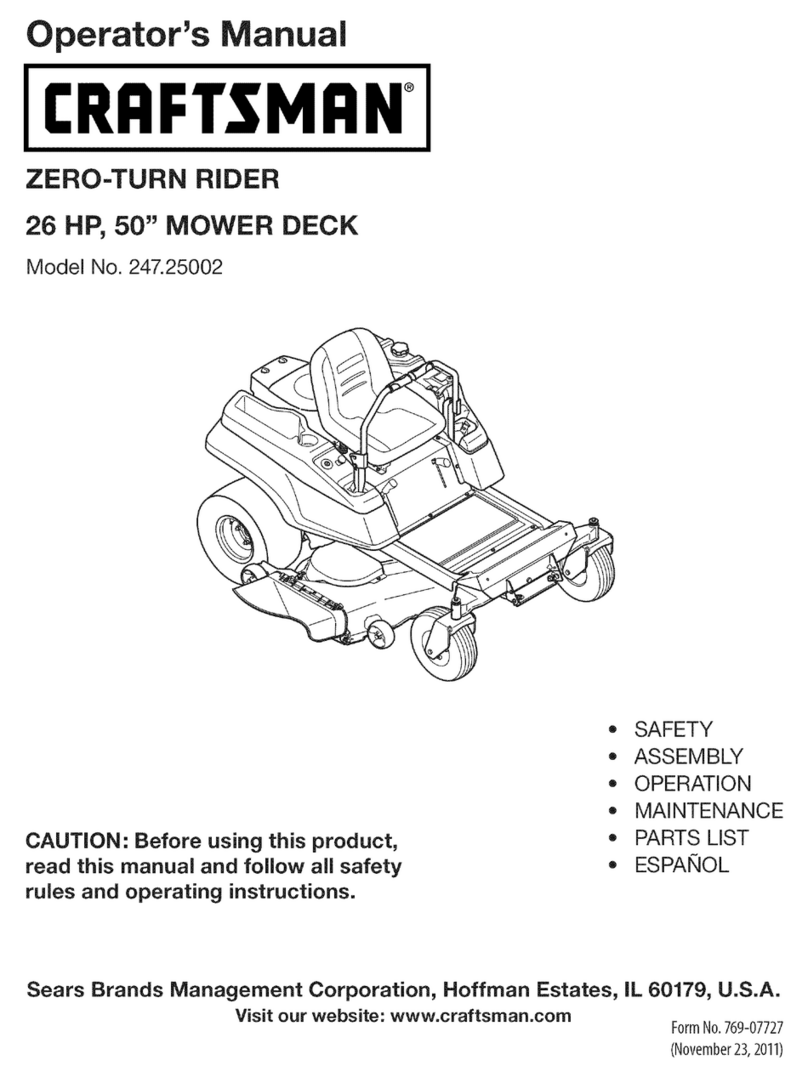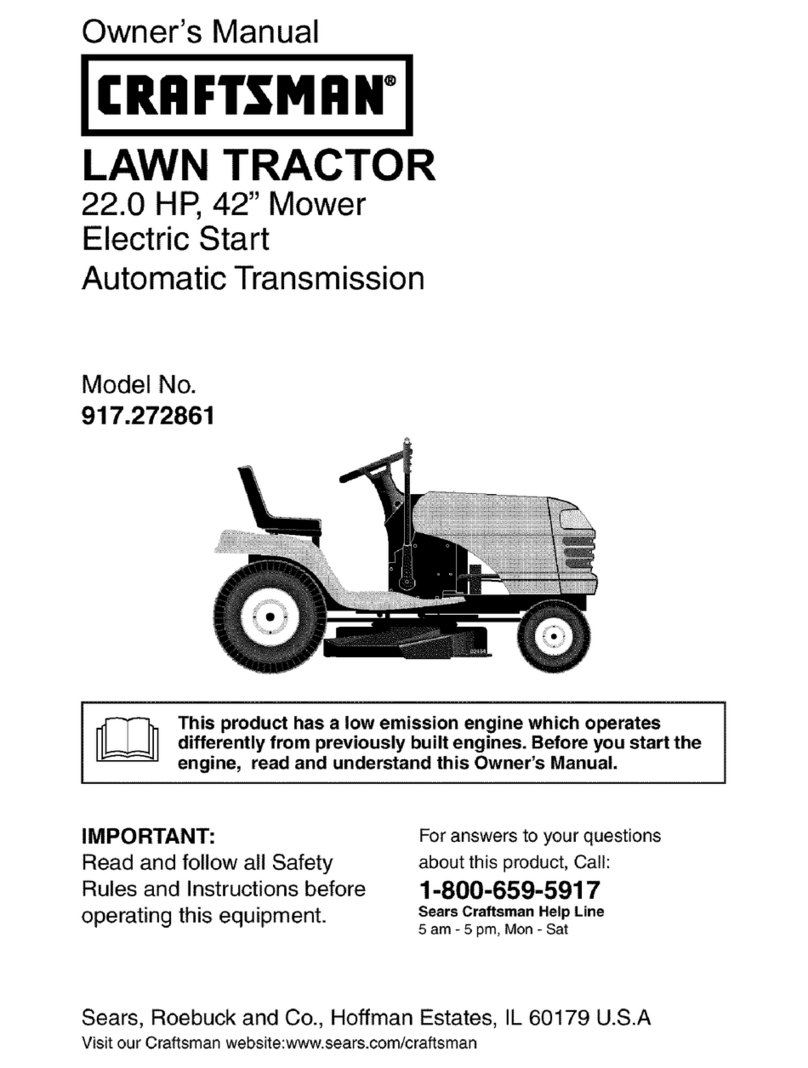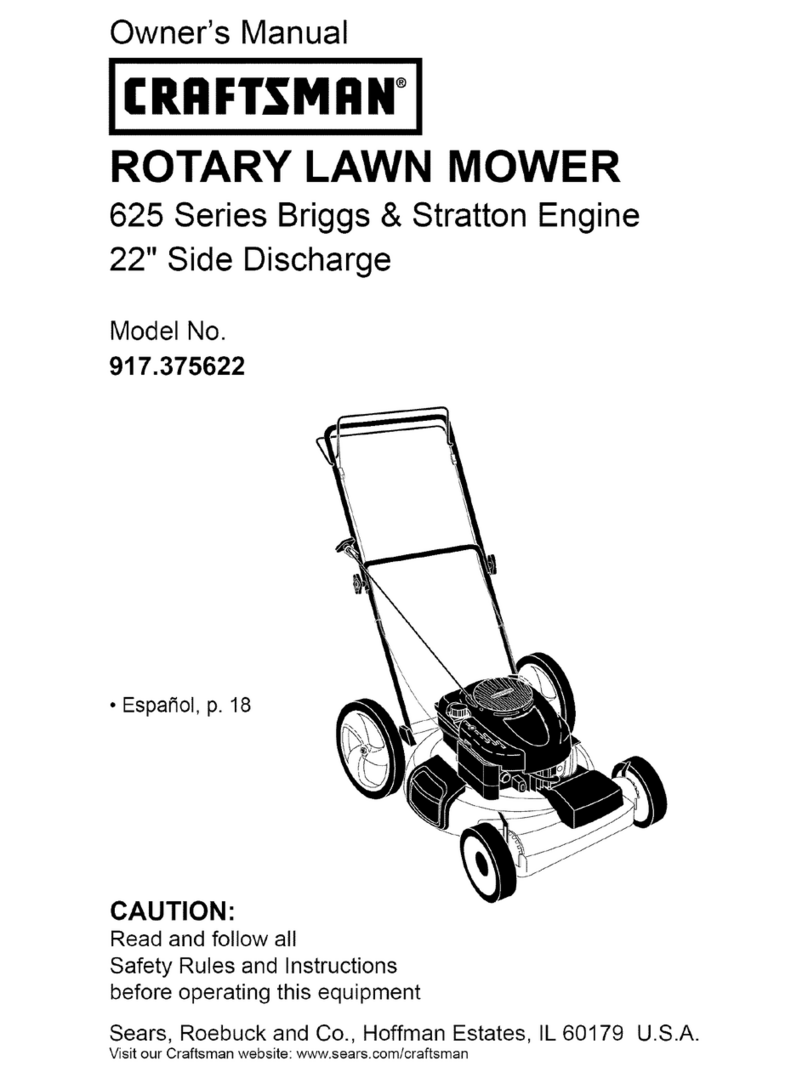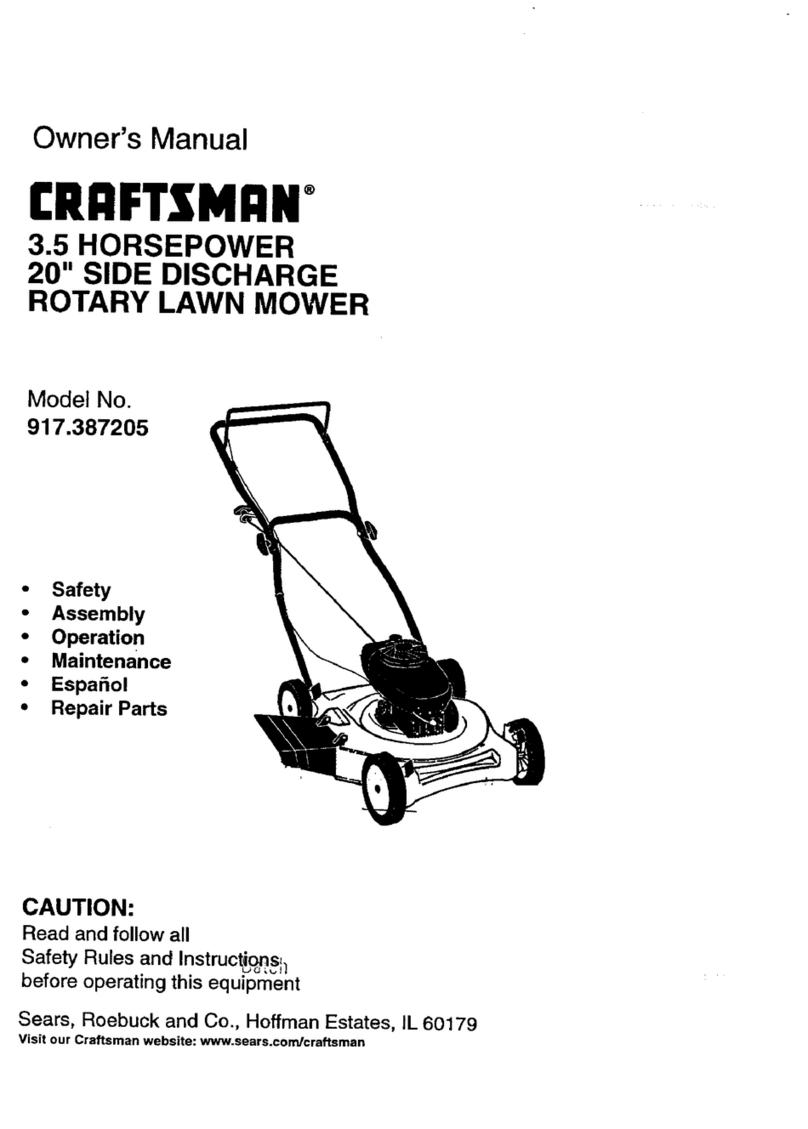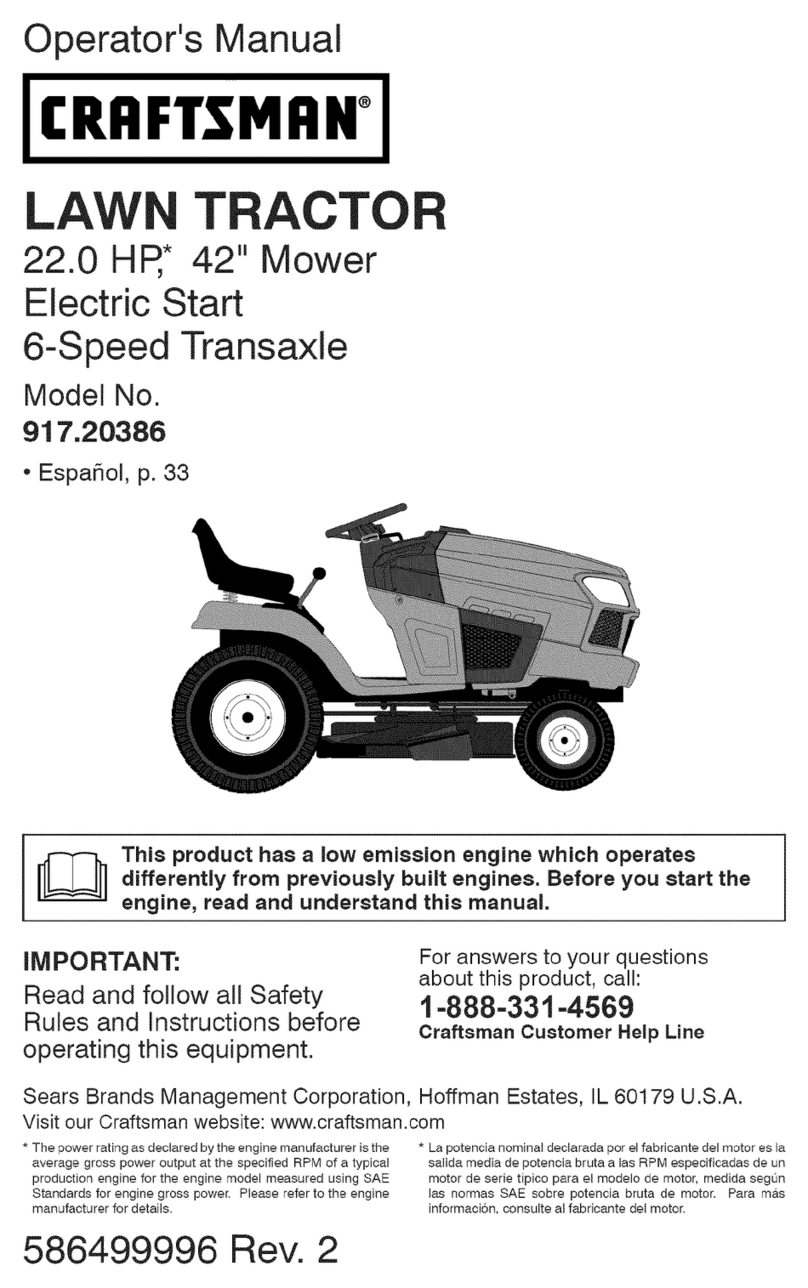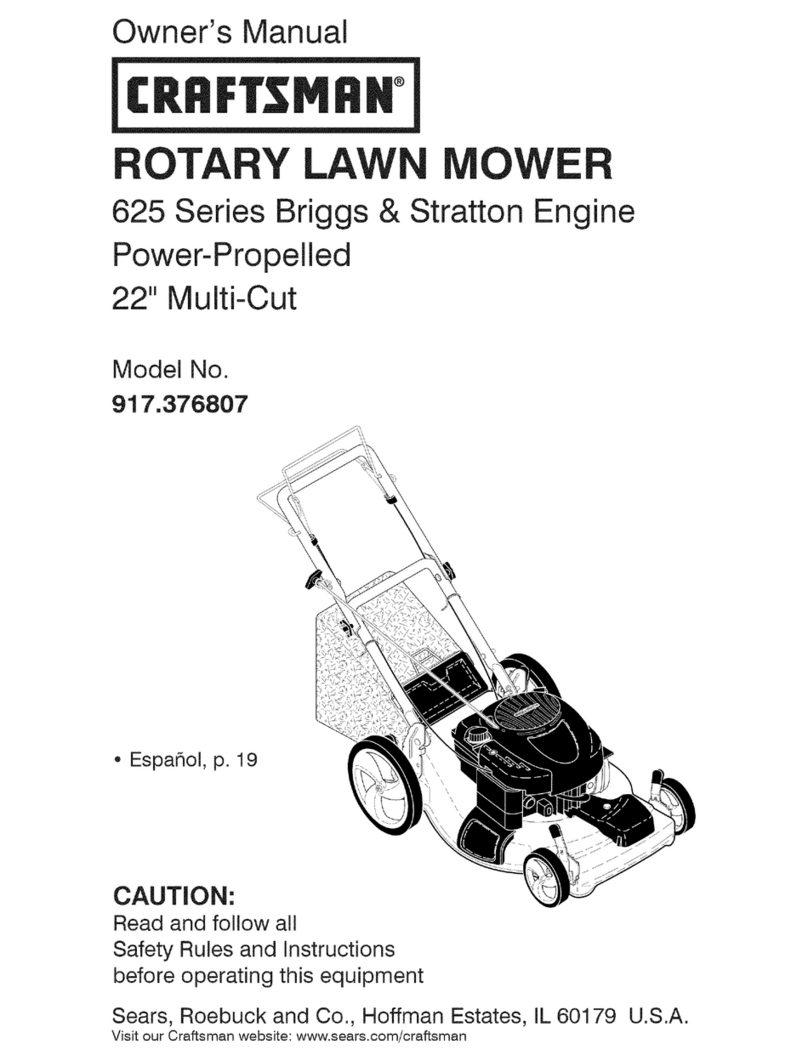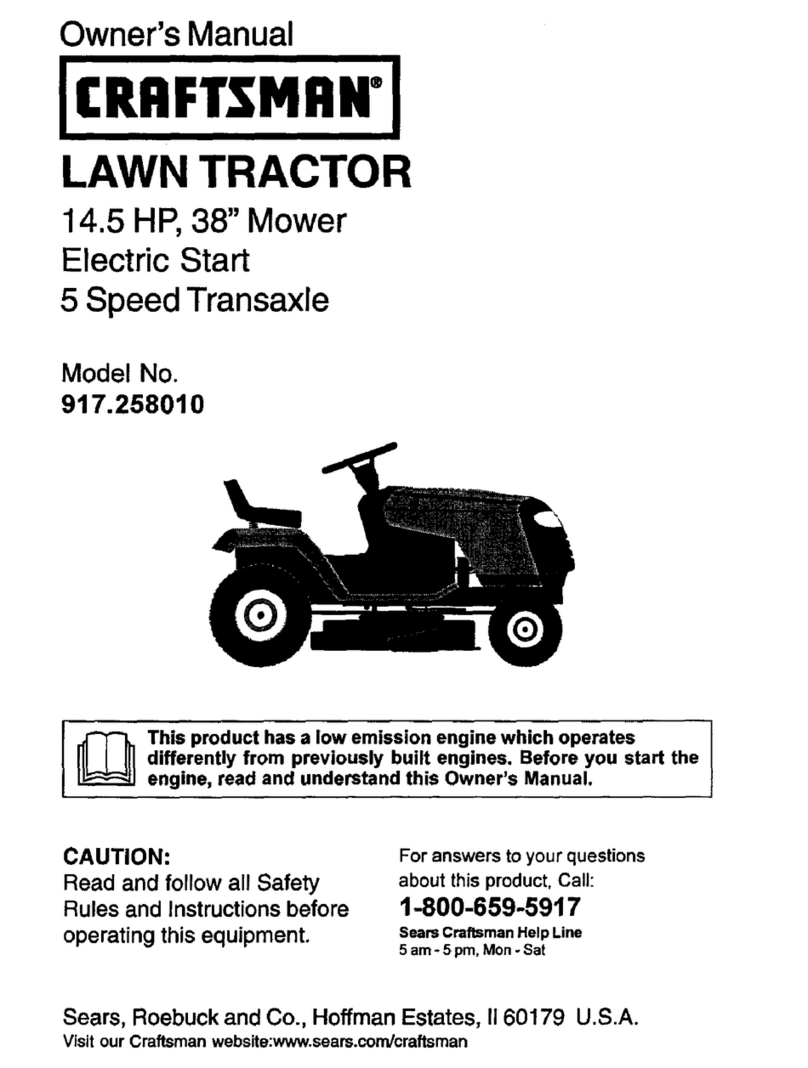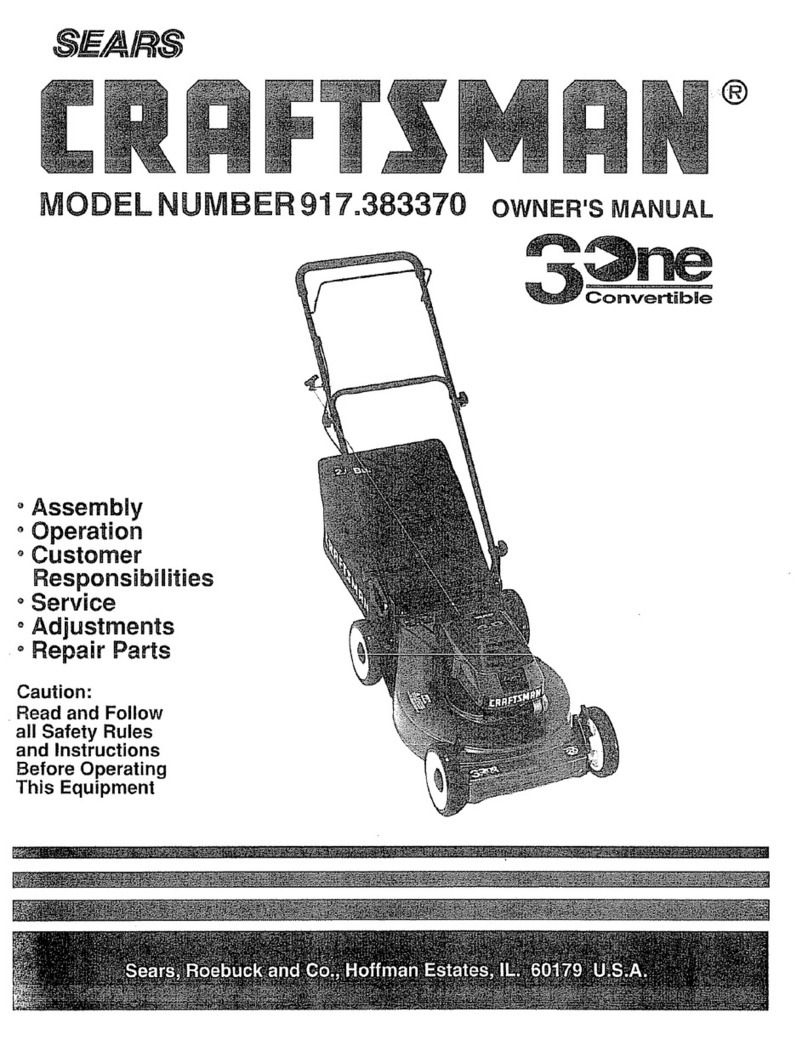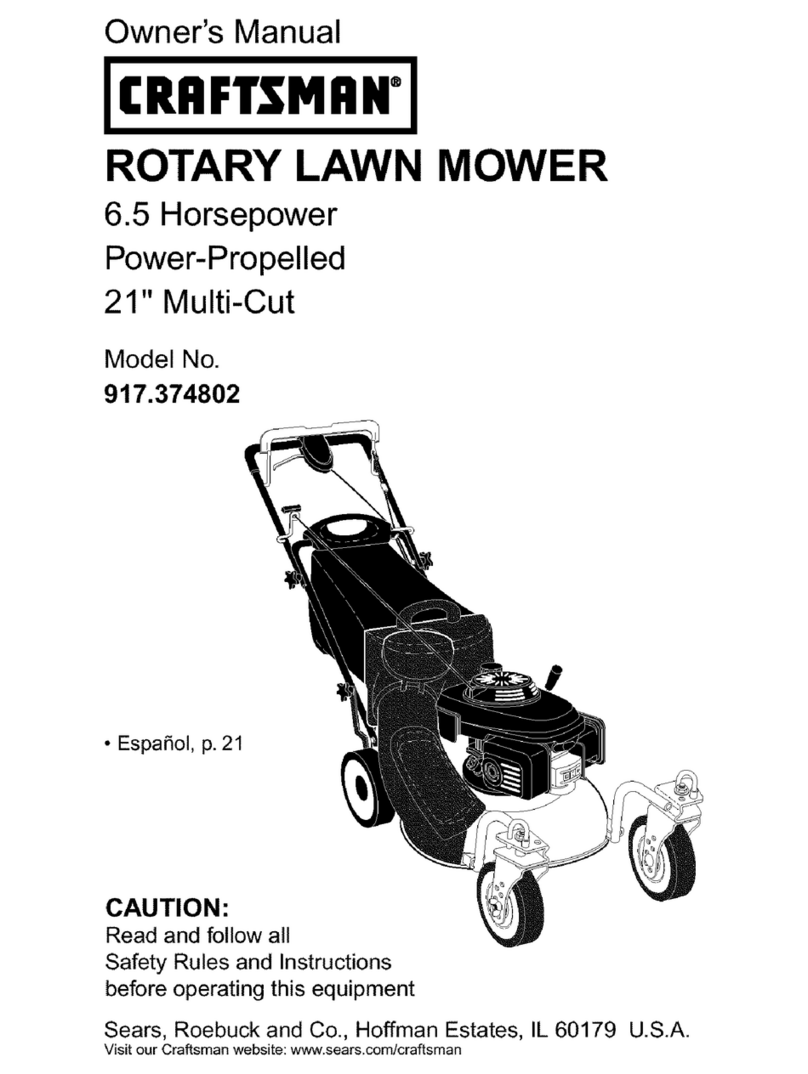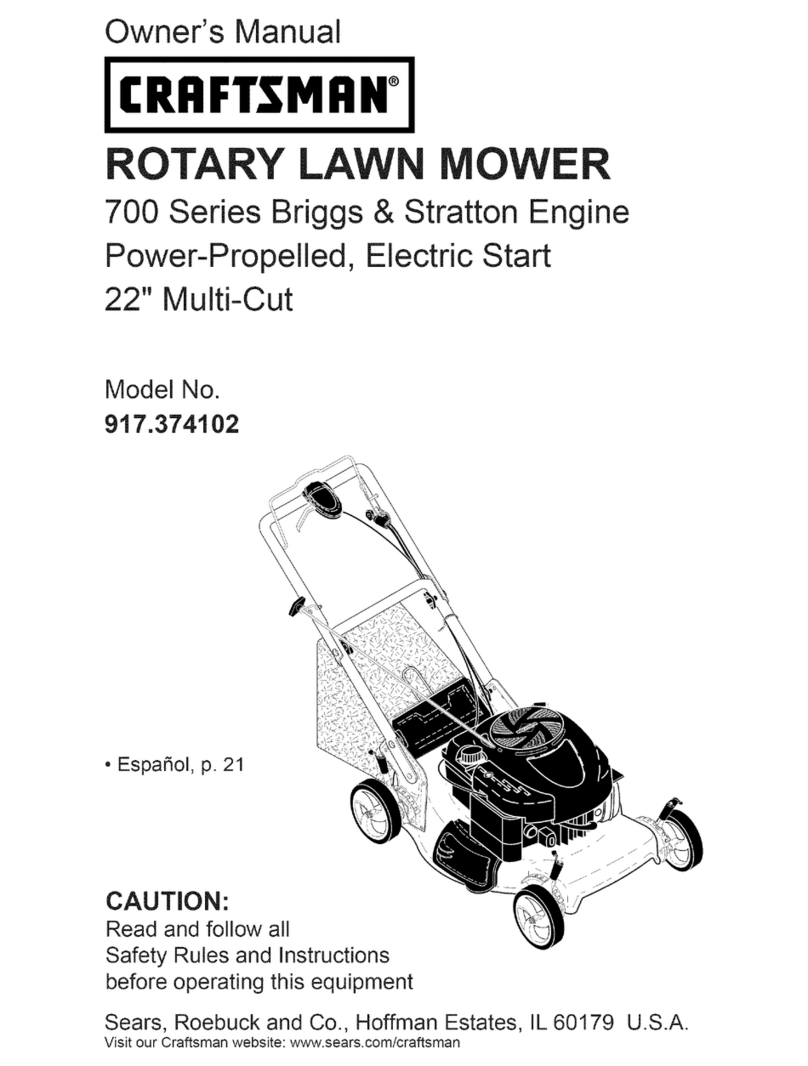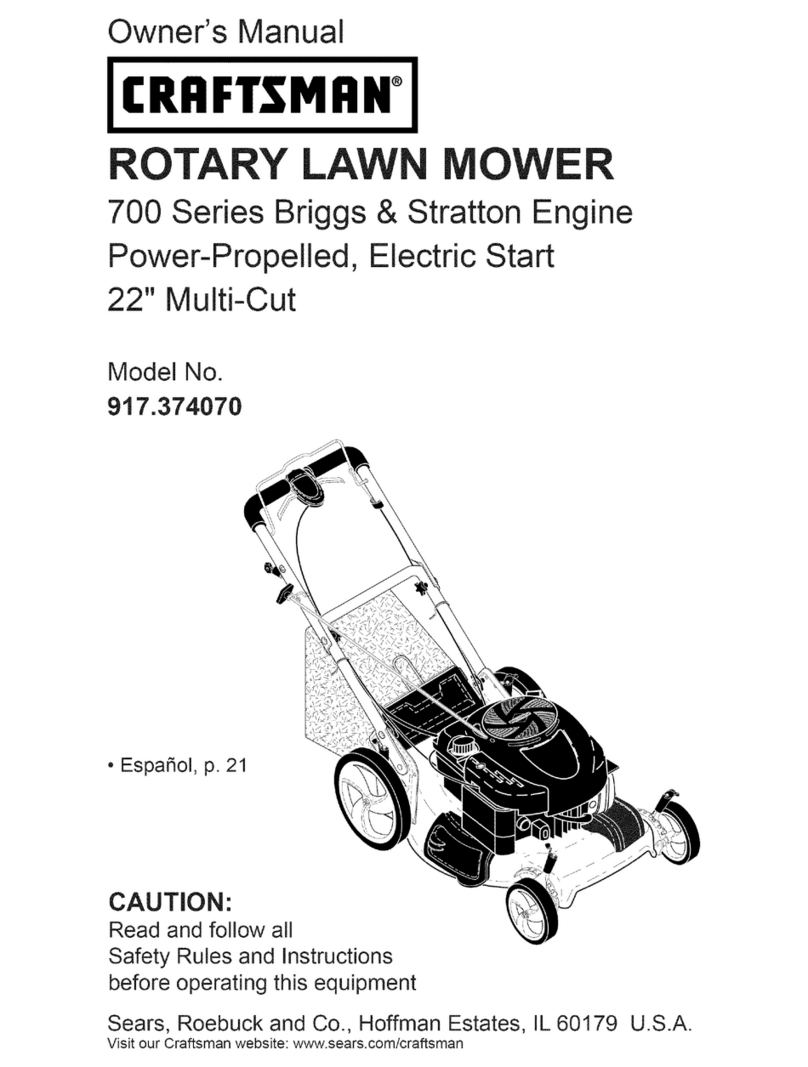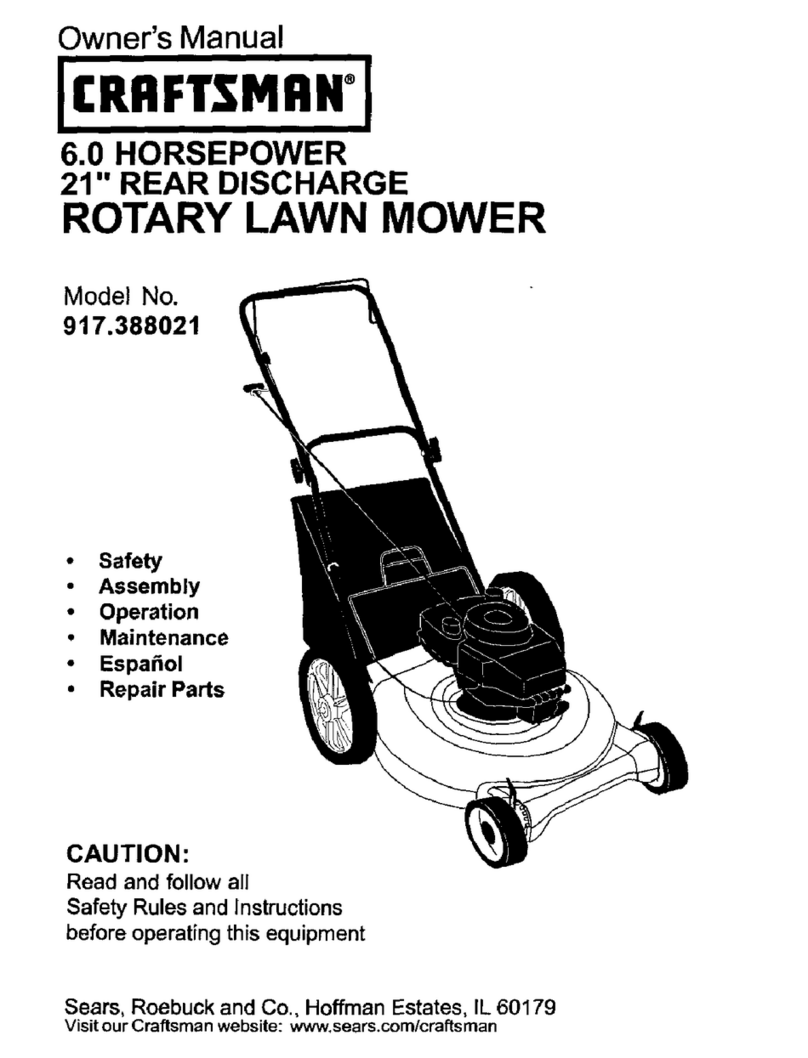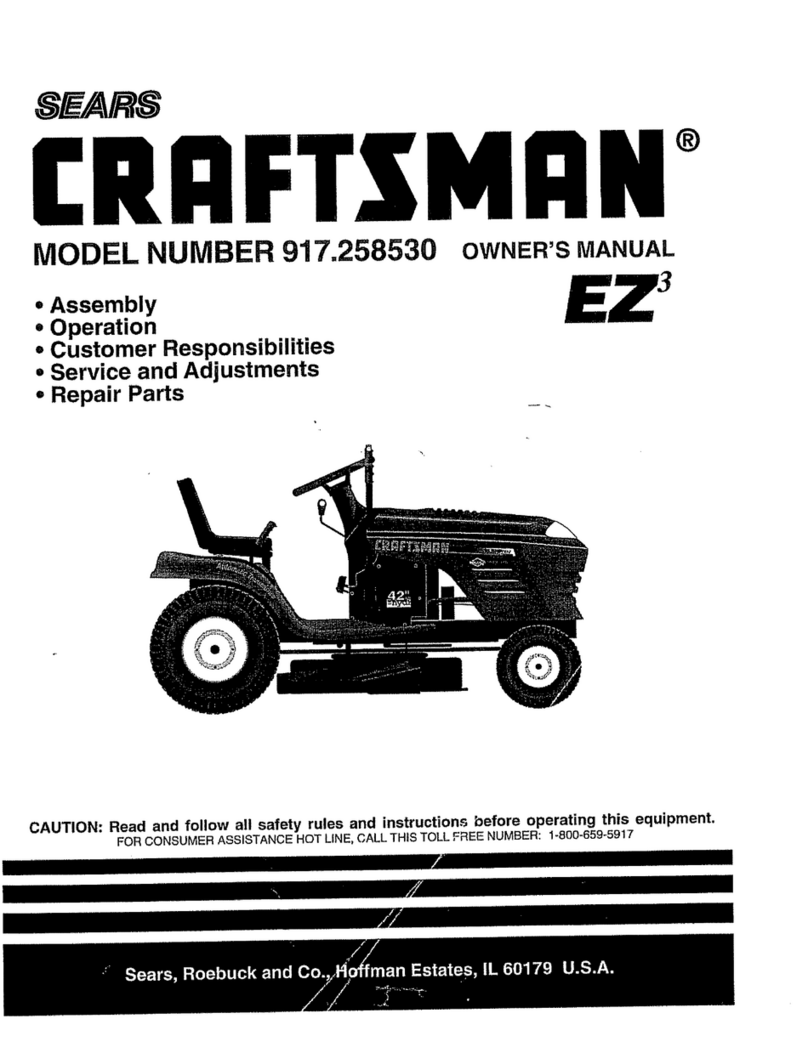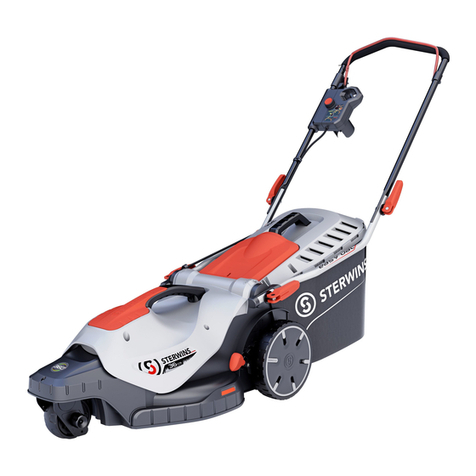IMPORTANT: This cuttingmachine is capable of amputating hands and feet and
throwing obects. Failure to observe the following safety instructionscould result in
sadous injury or death.
I. GENERAL OPERATION
• Read, understand,and follow all
instructionsin the manual and on the
machine before starting.
• Only allow responsibleadults,who are
familiar with the instructions,to operate
the machine.
• Clear the area ofobjectssuch as reeks,
toys,wire, etc., whichcouldbe picked
up and thrownby the blade.
•Be surethe area is clearof other people
before mowing. Stop machine if anyone
enters the area.
• Never carry passengers.
•Do notmaw in reverse unless absolutely
necessary. Always leek down and
behind before and while backing.
•Be aware ofthe mowerdischarge
directionand do not pointit at anyone.
Do notoperate the mower withouteither
the entire grass catcher or the guard kl
place.
•Slow down before turning.
•Never leave a runningmachine
unattended. Alwaysturnoff blades, sat
parkingbrake, stop engine, and remove
keys before dkmountiag.
•Turn off blades when not mowing.
•Stop engine before removing grass
catcher or uncloggingchute.
•Mow only in daylightor goodartificial
light.
•Do notoperate the machine while under
the influenceof alcoholor drugs.
•Watch for trafficwhen operatingnear or
crossingroadways.
•Use exf_acare when loading or unload-
ing the machine intoa trailer or truck.
•Data indicatesthat operators,age 60
years and above, are involvedin a large
percentage of riding mower-related
injudos. These operators should
evaluate their ability to operate the riding
mower safelyenough to protectthem-
selves and others from sedous injury.
•Keep machinefree ofgrass, leaves or
other debrisbuild-upwhichcan touch
hotexhaust Iengine ports and bum. Do
notallow the mower dock to plow leaves
or other debdswhich can cause build-
up tooccur. Clean any oilor fuel
spillagebefore operating or stedngthe
machine. Allow machine to cool before
storage.
I1.SLOPE OPERATION
Slopes are a majorfactor related to loss-of-
control and tipover accidents,whichcan re-
suit in severe injury or death. All slopes
requireexba caution, if you cannot backup
the slope or ifyou feel uneasy on it, do not
maw it.
DO:
•Mow up and down slopes, not across.
•Remove obstaclessuchas recks, tree
limbs,etc.
Watch for holes,ruts, or bumps. Uneven
terrain could overturnthe machine. Taft
grass can hide obstacles.
Use slew speed. Cheese a low gear so
that youwill not have tostop orshift
while on the slope.
Follow the manufacturer'srecommenda-
tionsfor wheel weightsor counter-
weightsto improve stability.
Use extra care with grasscatchersor
other attachments. These can change
the stabilityofthe machine.
Keep all movement on the slopes slow
and gradual. Do not make sudden
changes in speed or direction,
Avoid startingor stoppingona slope. If
tires lose traction, disengage the blades
and proceed slowly straightdown the
slope.
DO NOT:
•Do not turnon slopes unless necessary,
and then, turn slowlyand gradually
downhill,if possible.
•Do not mow near drop-offs, ditches, or
embankments. The mower could
suddenly turn over if a wheel is over the
edge of a cliffor ditch, or if an edge
caves in.
•DOeetmow on wet grass. Reduced
traction could cause sliding.
•Do not try tostabilize the machine by
putting your foot on the ground.
•Do notuse grass catcher on steep
slopes.
3
